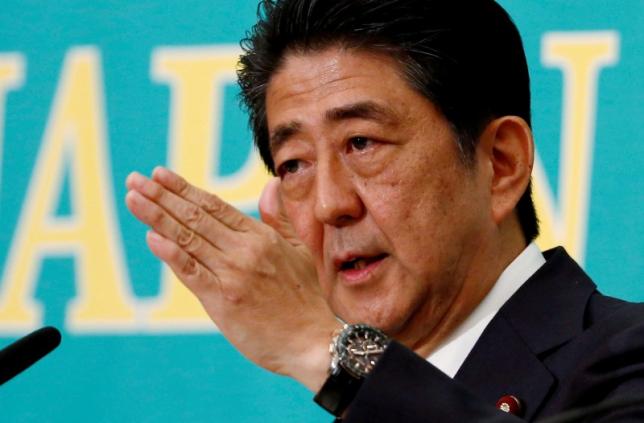Japan is expected to lift a state of emergency across a large part of the country on Thursday but the capital Tokyo will likely remain under restrictions until there is a convincing containment of the coronavirus.
Prime Minister Shinzo Abe is scheduled to hold a news conference at 6 p.m. (0900 GMT) when he is expected to announce the lifting of the emergency in 39 of Japan's 47 prefectures, but not in Tokyo.
The world's third-largest economy declared a nationwide state of emergency a month ago, urging citizens to reduce person-to-person contact by 80% in an effort to slow the pace of new coronavirus infections and ease the strain on medical services.
The government had said it would reassess the situation in mid-May.
Abe, like leaders everywhere, is striving to strike a balance between damage to the economy from prolonged shutdowns and the need to contain the virus.

Economists said normalisation would be gradual as the government keeps a wary eye on the possibility of a second wave of infections as seen in countries such as South Korea and China.
"The focus is whether the government will lift the emergency in the big areas such as Tokyo and Osaka before the end of May, as was initially planned," said Atsushi Takeda, chief economist at Itochu Research Institute.
"If it does, economic recovery will likely be faster than previously estimated."
The emergency gives governors more authority to tell people to stay at home and to close schools and businesses, but there is no penalty for non-compliance.
Some non-essential businesses, even in areas hit hard by the coronavirus, have started to reopen ahead of the government's review, and the scope of restrictions has varied across the country.
The emergency is also expected to remain in force in Osaka, Japan's second-largest metropolis, but its governor has announced criteria for gradually lifting some restraints on businesses including eateries and bars.
The 39 prefectures in which the emergency is expected to be lifted account for 54% of Japan's population.
WAITING
The greater Tokyo area, where the emergency is expected to remain in force, represents about a third of the economy.
"Tokyo is the heart of the Japanese economy. It's like driving a car with three wheels," said Jesper Koll, chief executive of asset manager WisdomTree Japan.
The government is set to add four economists to its advisory panel for combating the epidemic and another review will be conducted again in about a week.
Fast Retailing Co, owner of casual clothing chain Uniqlo, which has started to reopen outlets, said it planned more reopenings from Friday after the state of emergency is lifted.
In Ina city, Nagano - among the 39 prefectures expected to see the emergency lifted - Kazue Tominari said she would wait and see before re-opening her restaurant, which is now offering take-out only.
"It depends on how everyone feels," she said by telephone.
"If news comes out about more infections, people will probably go back to self-restraint mode. Until there are effective drugs or vaccines, I don't think we will be able to go back to the way we were before."
Japan has reported 16,100 cases of the coronavirus, not counting infections on a cruise ship that was quarantined in Yokohama port, and 696 deaths, according to public broadcaster NHK.
While Japan has avoided the kind of explosive epidemics seen in the United States and elsewhere, its testing has also been among the lowest, at 188 polymerase chain reaction (PCR) tests per 100,000 people, compared with 3,159 in Italy and 3,044 in Germany.
Hardest-hit Tokyo has conducted just 50,000 tests, of which about 5,000 were positive.
Although Japan's emergency lacks enforcement powers, mobility data has shown a marked drop in the movement of people.
The government this week reported a 20% fall in the number of hospitalised COVID-19 patients in the nine days to May 7, to 4,449. In Tokyo, new cases fell to just 10 on Wednesday.








